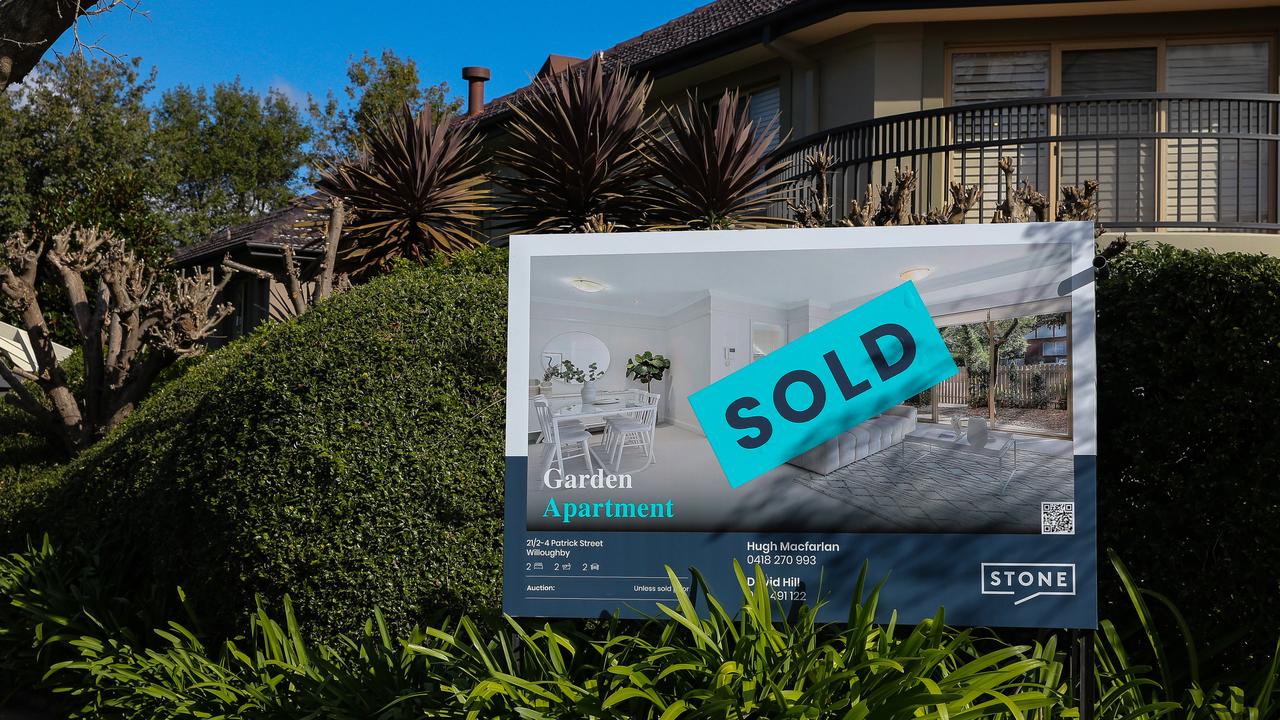Bank of Mum and Dad is increasingly the only way to buy a home
Many first-time buyers trying to get into the property market are struggling and when faced with the star reality it’s no surprise.
Home ownership is part of the very fabric of everyday Australian life.
At one time or another the overwhelming majority of Australians are or were prospective first-time homeowners. Over the decades, the experience of this cohort of Australians at any given time could be vastly different.
For example, in 1983 the Hawke Government introduced its First Home Owner Scheme (FHOS) providing $8000 or 8.8 per cent of the purchase price of a median Sydney house to eligible couples attempting to purchase their first home.
This was arguably the most generous government support ever provided for first home buyers and if we were to convert that 8.8 per cent of the purchase price of the median Sydney home into today’s money, that would translate into a figure of around $175,000.

An absolutely enormous level of support for first home buyers relative to what would become the norm in the next 40 years, but provided at a time when the nation’s economy was in recession and the unemployment rate was between 9.3 and 10.5 per cent. In this snapshot in time, home ownership was affordable and households generally achieved this milestone on their own.
Times change
Fast forward to 2023 and things are profoundly different. During 2022-23, a little under one third of home first home buyers used various federal government schemes provided by Housing Australia (formerly the National Housing Finance and Investment Corporation) to purchase a property, this is up from 1 in 7 in 2021-22.
Housing Australia provides three schemes for prospective first home buyers, the First Home Guarantee (FHBG), Family Home Guarantee (FHG) and the Regional First Home Buyer Guarantee (RFHBG).
FHBG and RFHBG provide prospective eligible first home buyers with the ability to get mortgages with as little as a 5 per cent deposit, without having to pay lender’s mortgage insurance.
Under the FHG, an eligible single parent can purchase a home can purchase a home with as little as a 2 per cent deposit, without having to get lender’s mortgage insurance. During 2022-23, over 32,000 guarantees in total were provided by Housing Australia, up 39 per cent from 2021-22.
Next year will see the introduction of the Albanese government’s ‘Help to Buy’ shared equity scheme provided the legislation passes through Parliament. Under the scheme, the federal government will take a 30 per cent equity stake in the property, while the first homebuyer would have a mortgage for the remaining 70 per cent minus their deposit. The required deposit for taking part in the scheme is 2 per cent of the homes purchase price.
Between the scheme’s introduction in 2024 and scheduled conclusion in 2028, 10,000 places per year will be provided for prospective first home buyers.
The various guarantees provided by Housing Australia and the Help To Buy scheme would mean there are 60,000 places on offer for eligible households to purchase homes.
Considering the 2022-23 financial year saw a little over 103,000 new first homebuyer finance commitments, it’s clear the government is taking on an increasingly large role in the housing market.
Mum and Dad step in
Meanwhile, the mums and dads of Australia’s prospective first home buyers have collectively mounted an intervention of their own. According to data from research firm Digital Finance Analytics, the proportion of first home buyers seeking parental assistance with purchasing a home has risen from 3 per cent in the March quarter of 2010 to 28.8 per cent today.
It’s worth noting that the current proportion of first home buyers seeking assistance is less than half the 61.8 per cent recorded in the December quarter of 2021.
During 2022-23, first home buyers seeking assistance with purchasing a home made up 29.6 per cent of total new first homebuyer finance commitments. The average level of assistance provided to this cohort, a little under $104,000.
A very different reality
In decades past, there has often been various government schemes to help first home buyers into the property market. As far back as 1963, the federal government was providing some form of support to the property market. From the Hawke government’s extremely generous grants, to those of the more modern era provided by the Howard and Rudd government, federal intervention in the housing market has not been uncommon.
But in the present day, things have evolved. With property prices relative to incomes in a completely different world to where they were under Whitlam, Hawke, Howard or even Rudd, government first homeowner schemes and parental assistance have become something resembling a necessity for many prospective homeowners.
Between parental assistance and the various first homebuyer schemes, over 60 per cent of first home buyers sought some form of parental or federal assistance, assuming no overlap between the two groups.
To what degree first home buyers in 2022-23 sought both parental and federal government assistance is unclear, but what is more concrete is that the journey toward home ownership is not the more solitary experience that it has been at times in the past.
It is said that, “It takes a village to raise a child”. In Australia in 2023, barring some sort of major change in housing affordability, it is perhaps also a case of it increasingly takes a village to get a first homebuyer into a home.
Tarric Brooker is a freelance journalist and social commentator | @AvidCommentator
Originally published as Bank of Mum and Dad is increasingly the only way to buy a home






